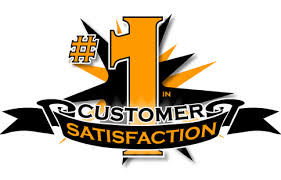Concept of Customer Satisfaction
Pioneer research in this area (George and Barksdale, 1974) identified several distinct differences between the marketing of “service” firms and “manufacturing” firms. It was Shostack’s (1977) research that brought to the fore the distinct nature of services marketing. She noted that services were intangible, rendered, experienced, and unable to be stored. Consequently, her conclusion was that services should be marketed differently from tangible products. It was her early work that gave equal weight to the components of “service” as it did to “product.” Her research concluded that service marketing strategies should deal with specific issues related to distinct elements within each product. She also concluded that changes in any single element could impact other elements within the function, and as such, services marketing should consider products more holistically, meaning to look at each item on its merits alone.
Enis and Roering (1984) were unconvinced that there is a distinction between service marketing and manufacturing marketing. It was their conclusion that the strategies used for all product is strictly a “bundle of benefits” regardless of whether they are tangible or intangible.
Relationship between Customer Satisfactions and Service Quality in Service Product
The principal study by Zenithal, et al (1985) fostered a direct relationship between customer satisfaction and service quality and broadened the unique characteristics of service products. They explained that service in its production sense and consumption occurs simultaneously. Production and consumption of service products cannot exist in isolation, requiring them to be simultaneously produced and consumed. Additionally, they suggest that service production and consumption is by its own nature heterogeneous. Their research was significant in that it highlighted the differences between manufactured products and service products, and it introduced the interrelationships between customer service and customer satisfaction through the measurement of gaps.
Customer satisfaction:
A key aspect in customer satisfaction is the way a customer can attain satisfaction or dissatisfaction with a company’s service. If a company wants to satisfy its customers the first question it needs to answer is what it that satisfies customers is and, equally important, what it is that makes customers dissatisfied with the company and its products and services. Satisfying customers depends on the balance between customers’ expectations and customers’ experiences with the products and services (Zeithaml et al., 1990). When a company is able to lift a customer’s experience to a level that exceeds that customer’s expectations, then that customer will be satisfied. Because customers have ever increasing expectations it is necessary for companies continuously to improve their quality and hence customers’ experiences with the company. The issue is what should be improved to keep the customers satisfied. What customers experience is not just one simple aspect of a company, but a whole range of aspects? Some of these aspects are concerned with the way customers experience the company itself, some are concerned with the way customers experience the physical product and, finally, some are concerned with the way customers experience the service the company offers.
















